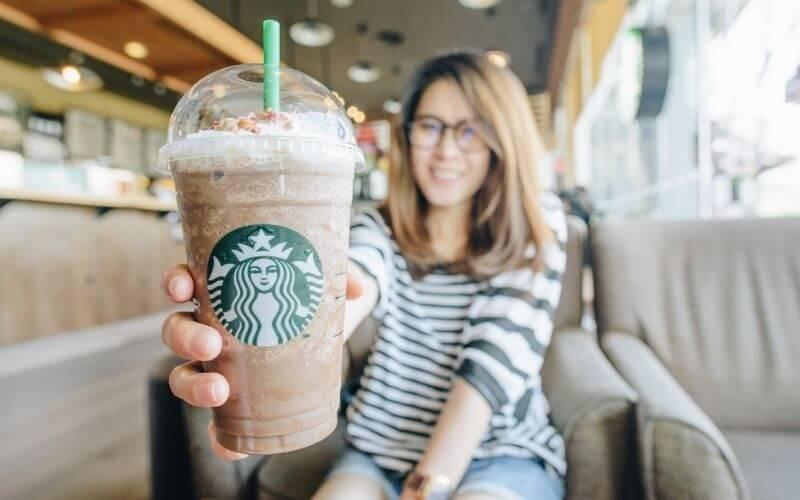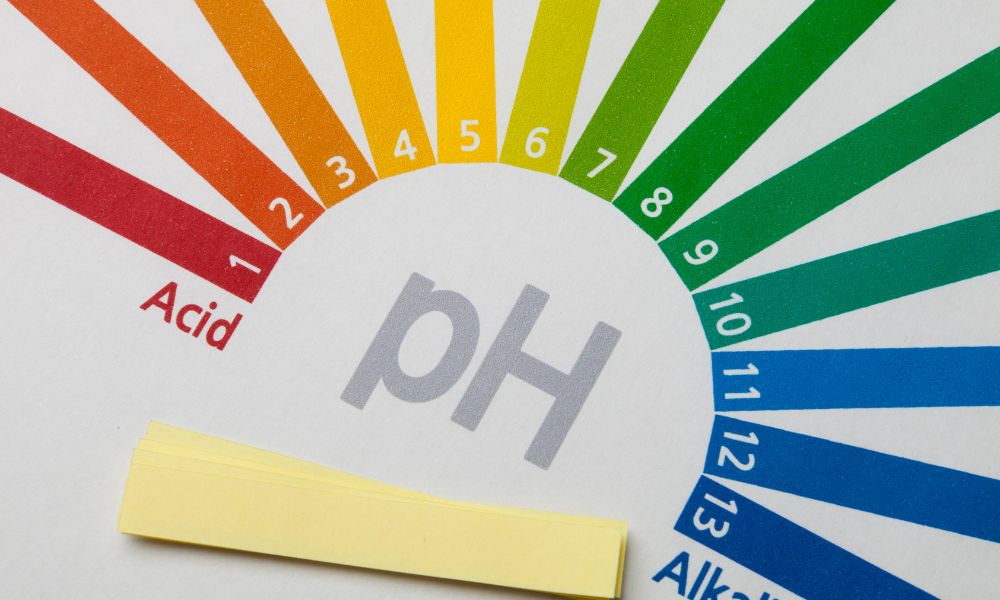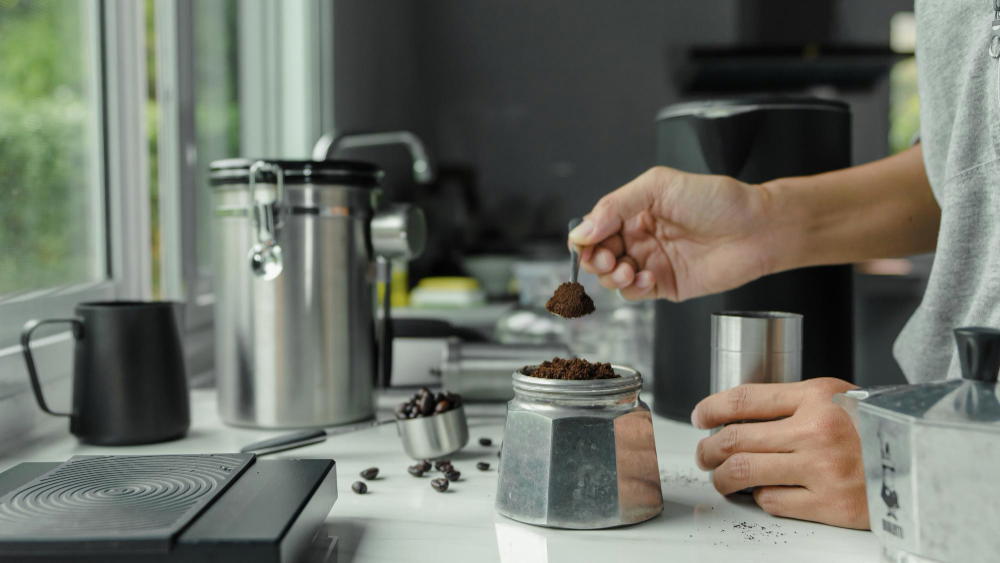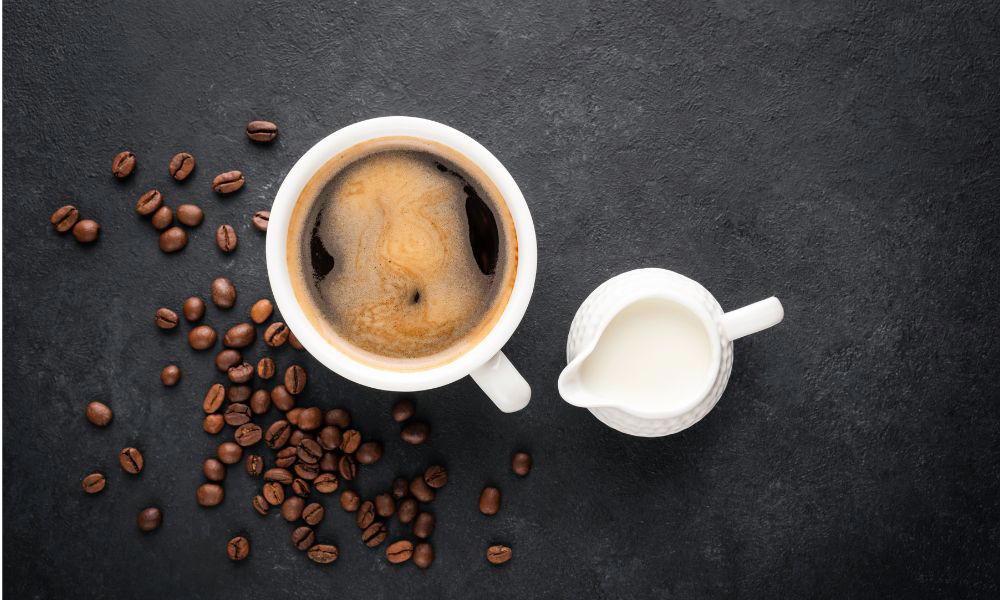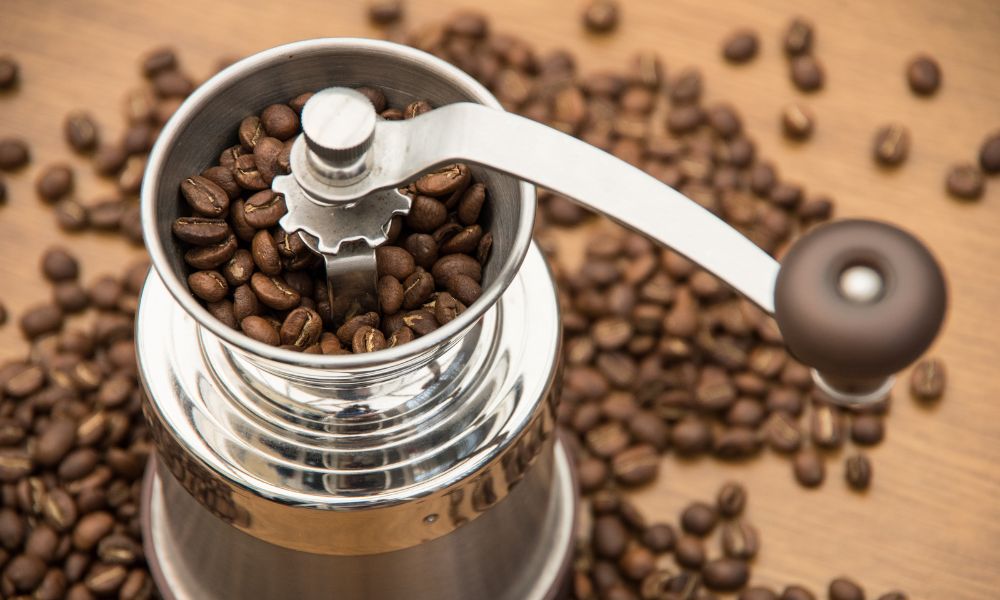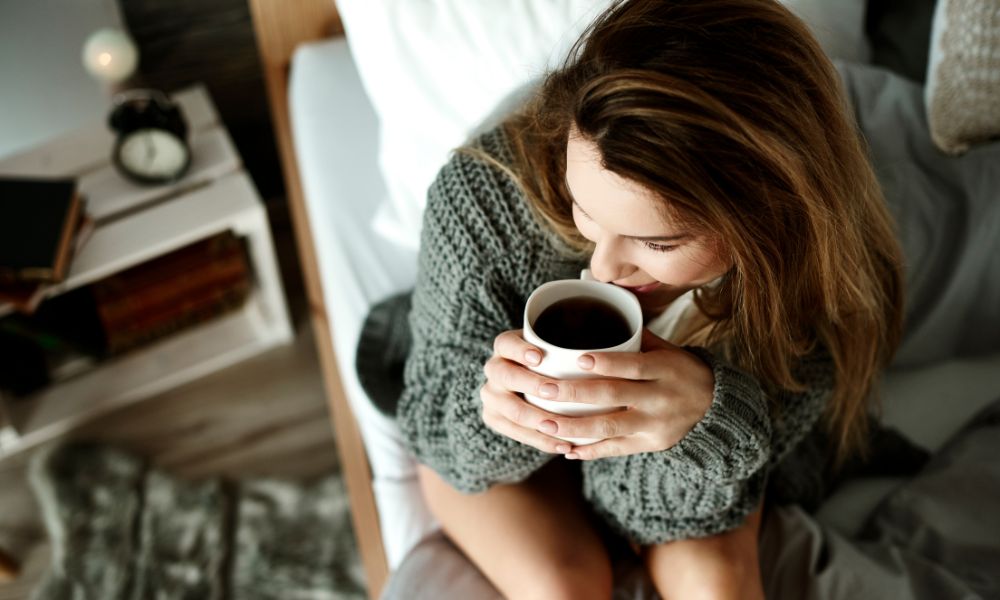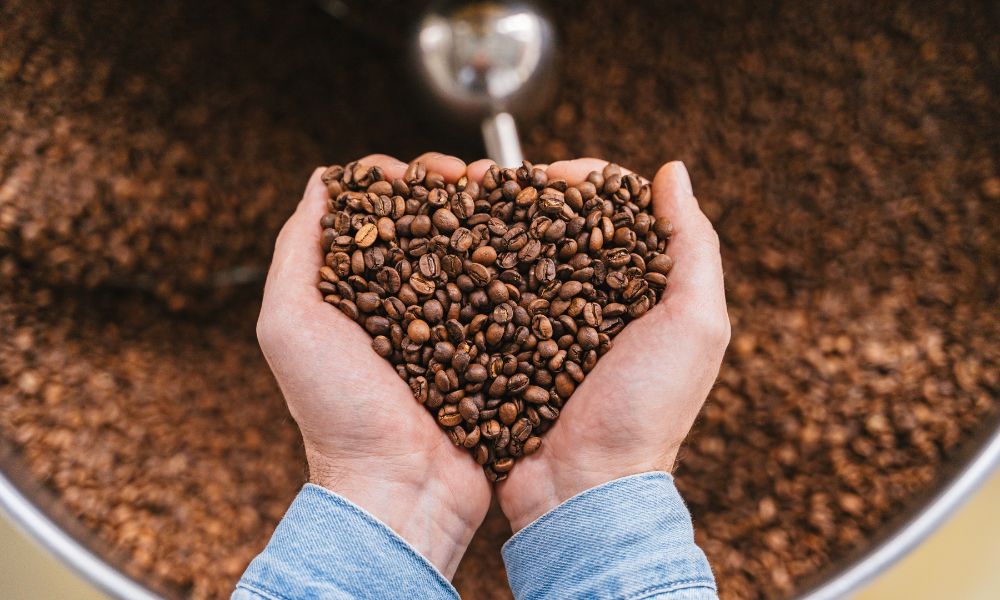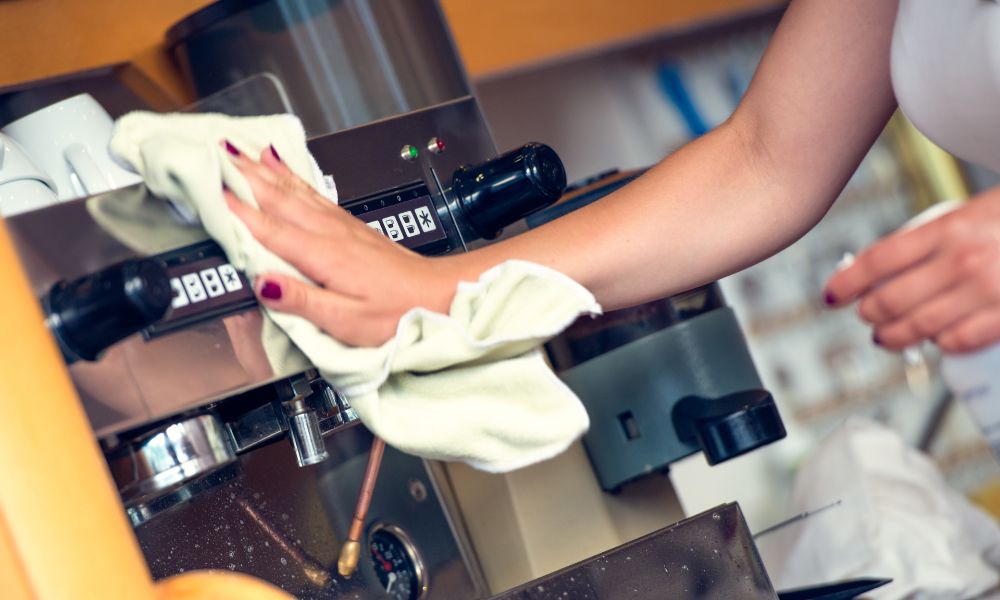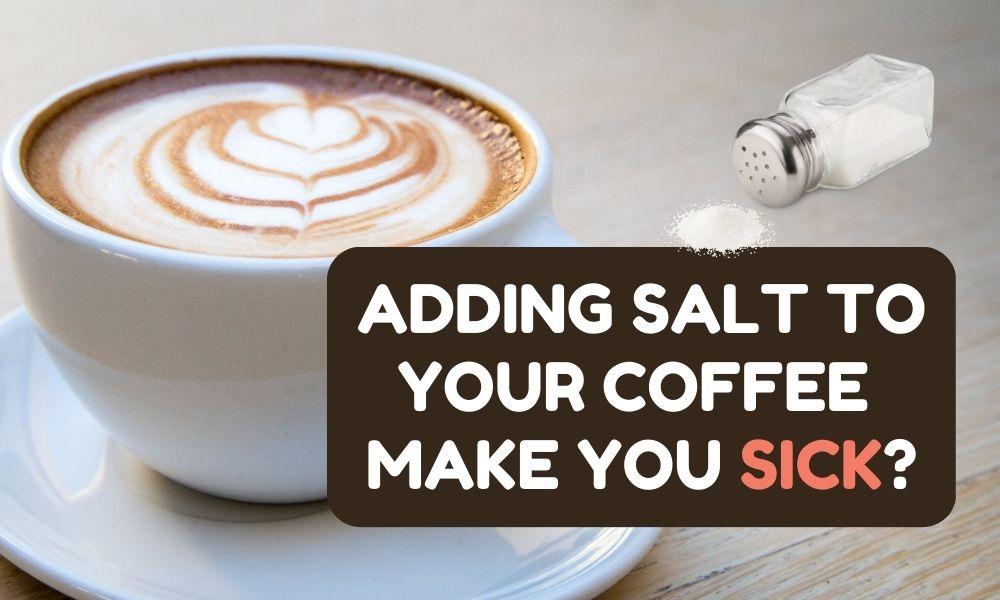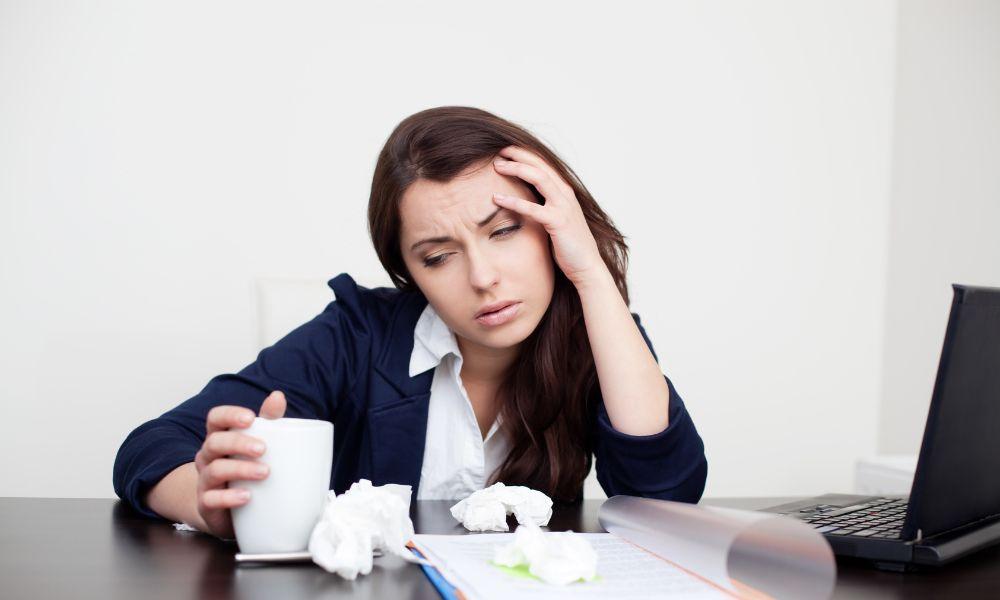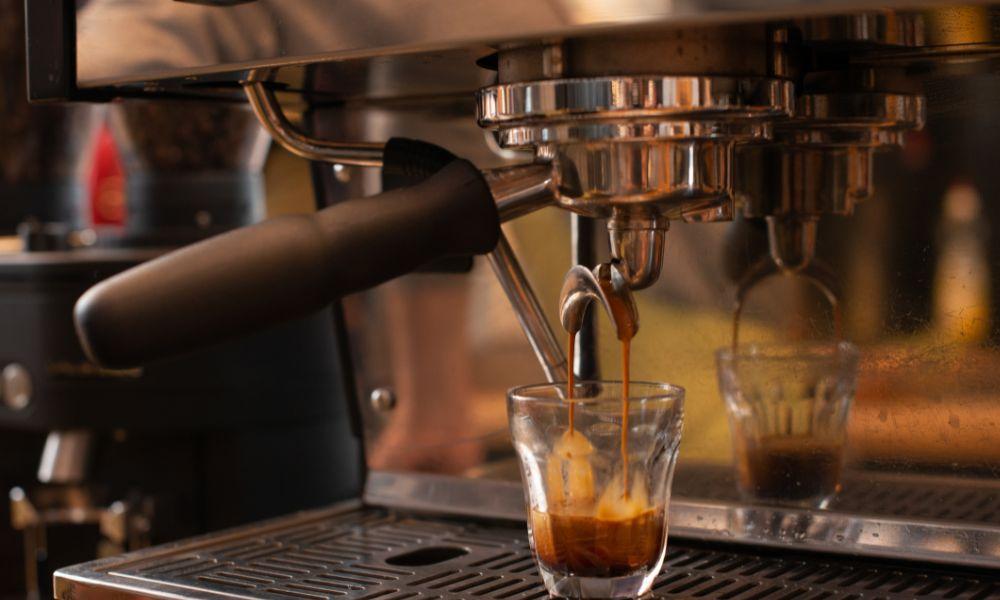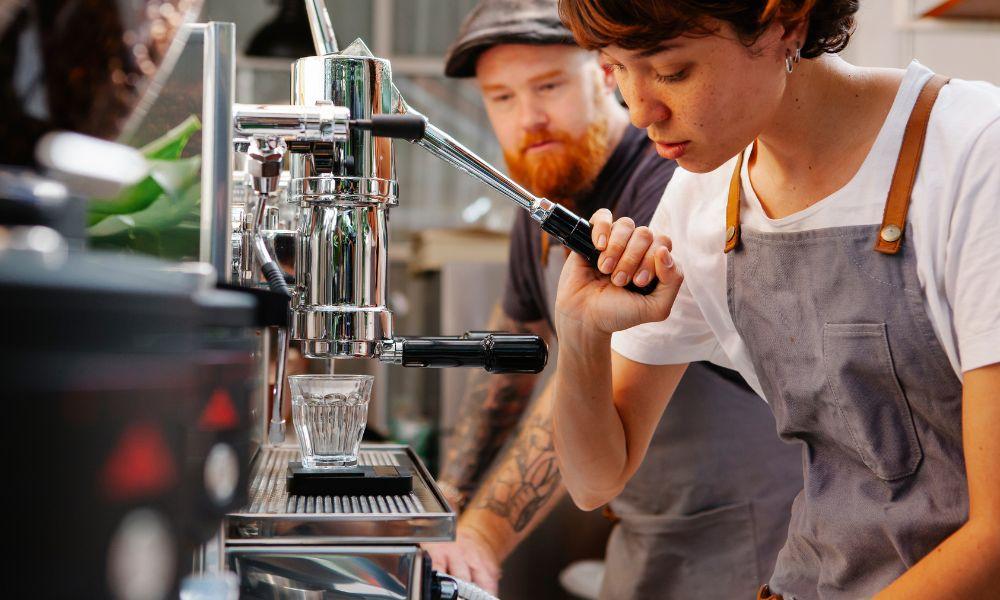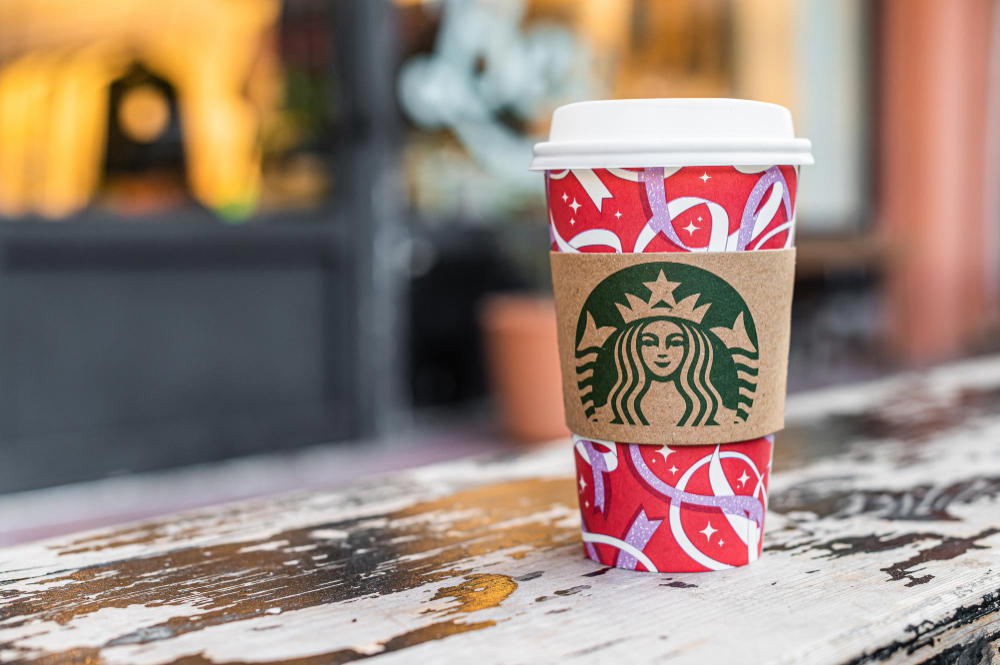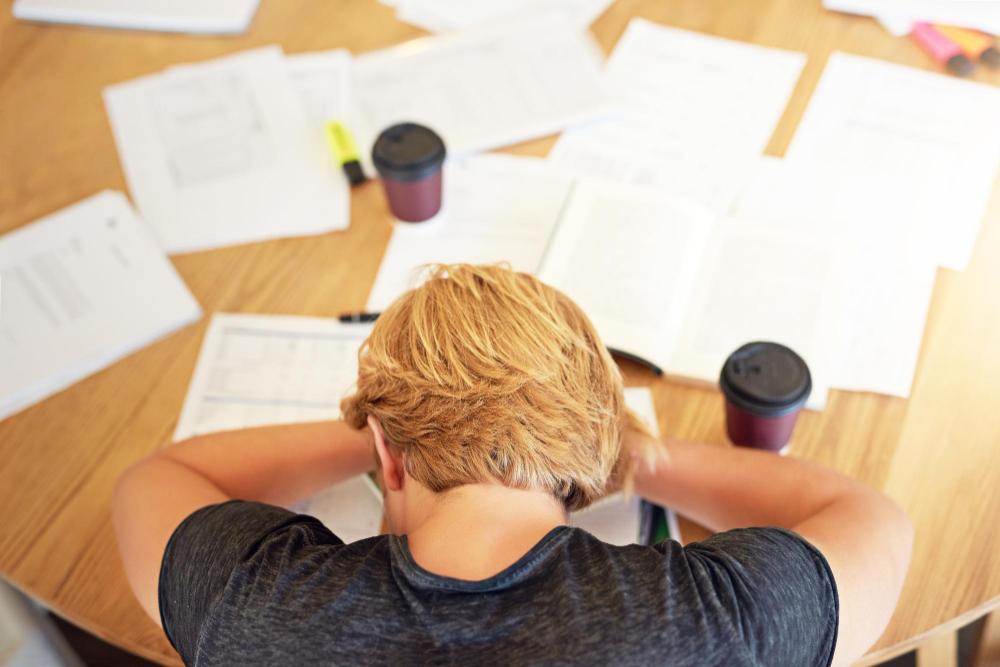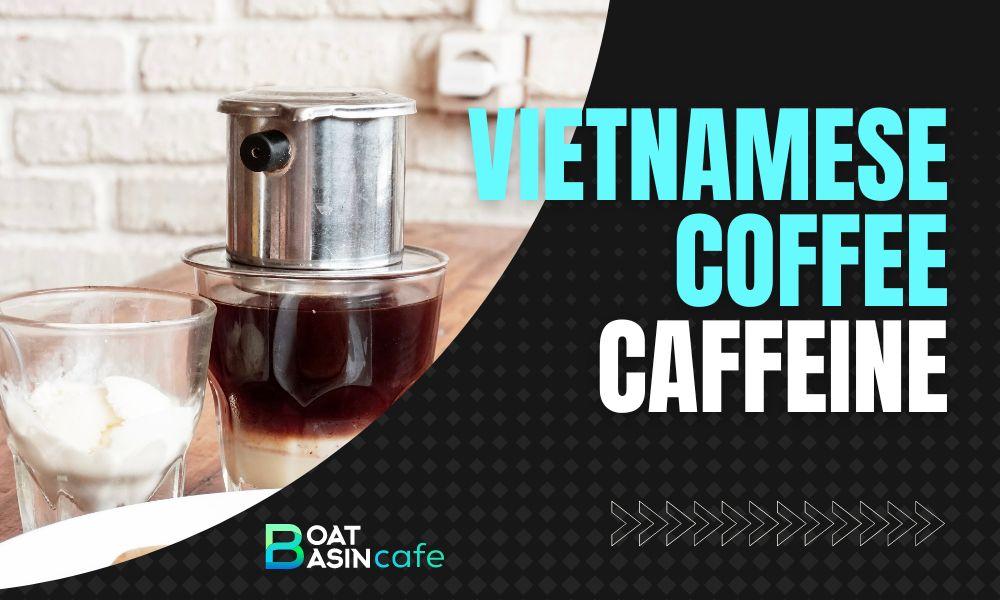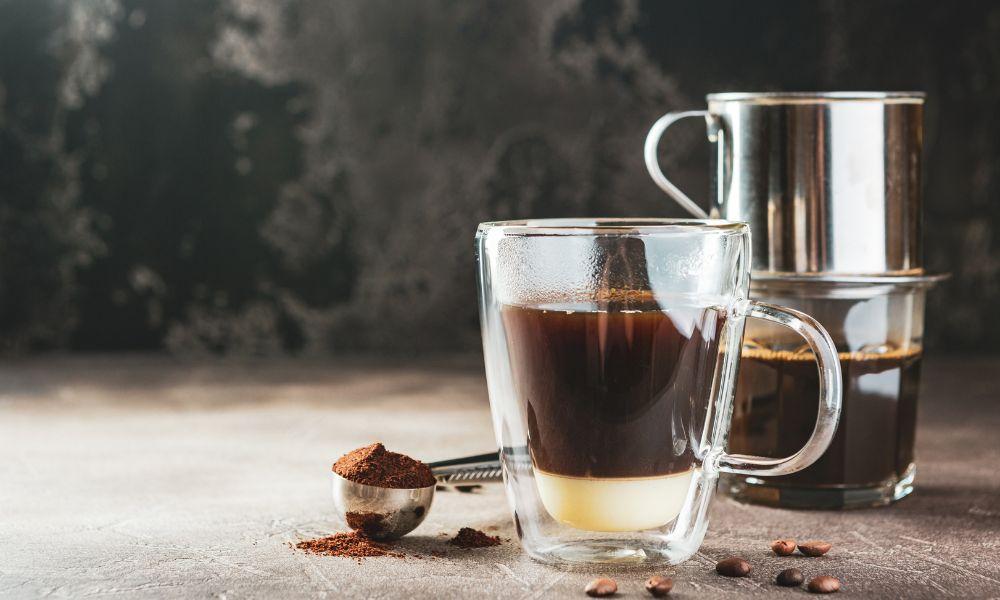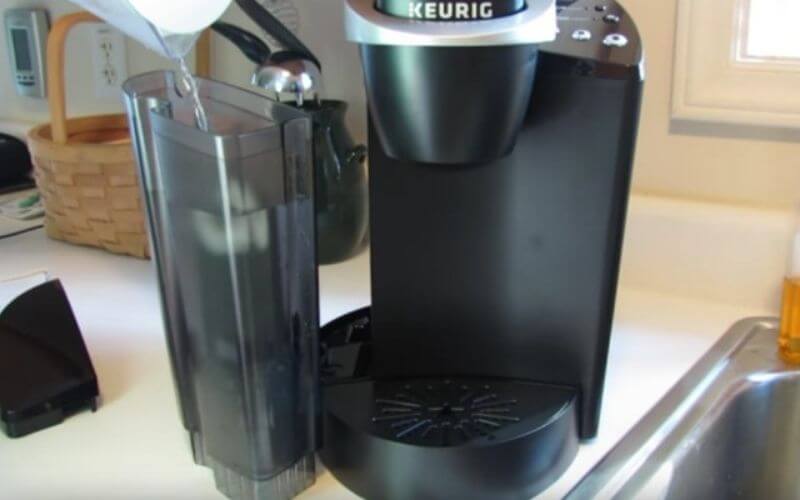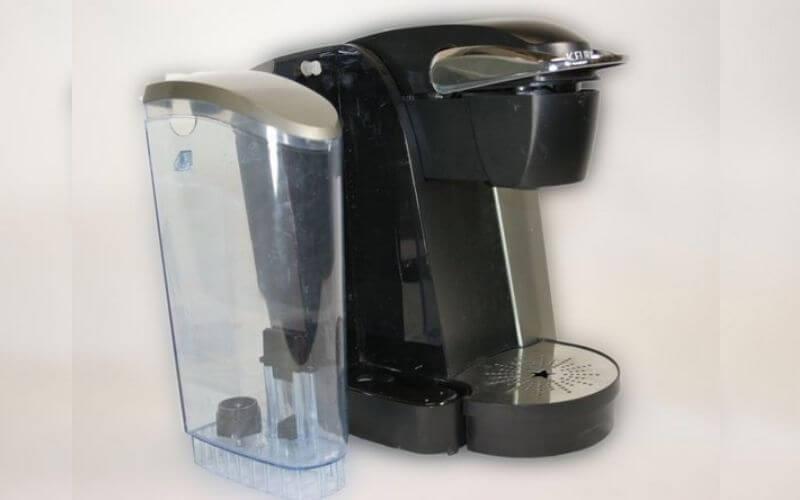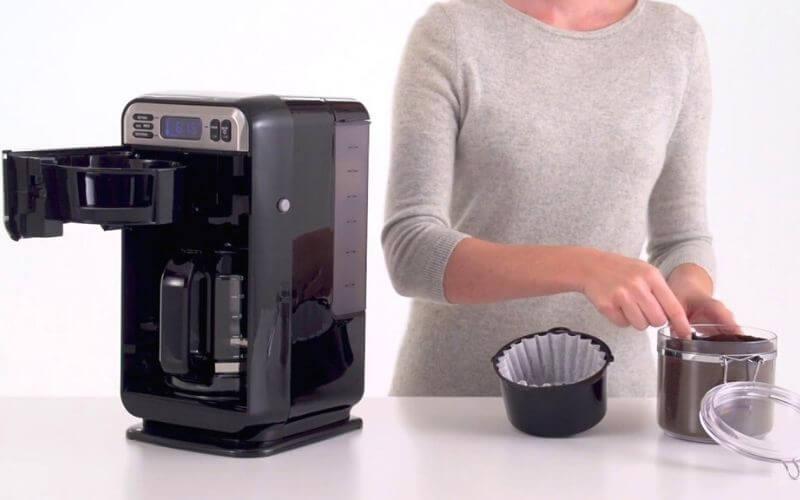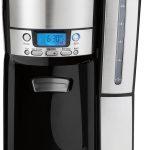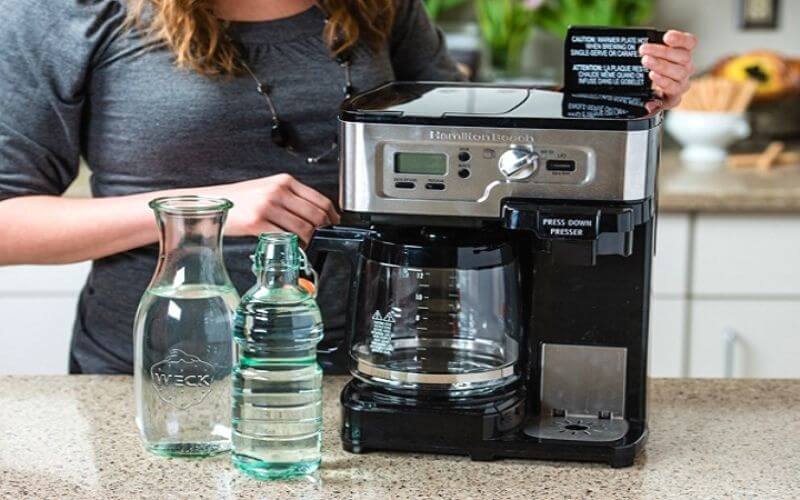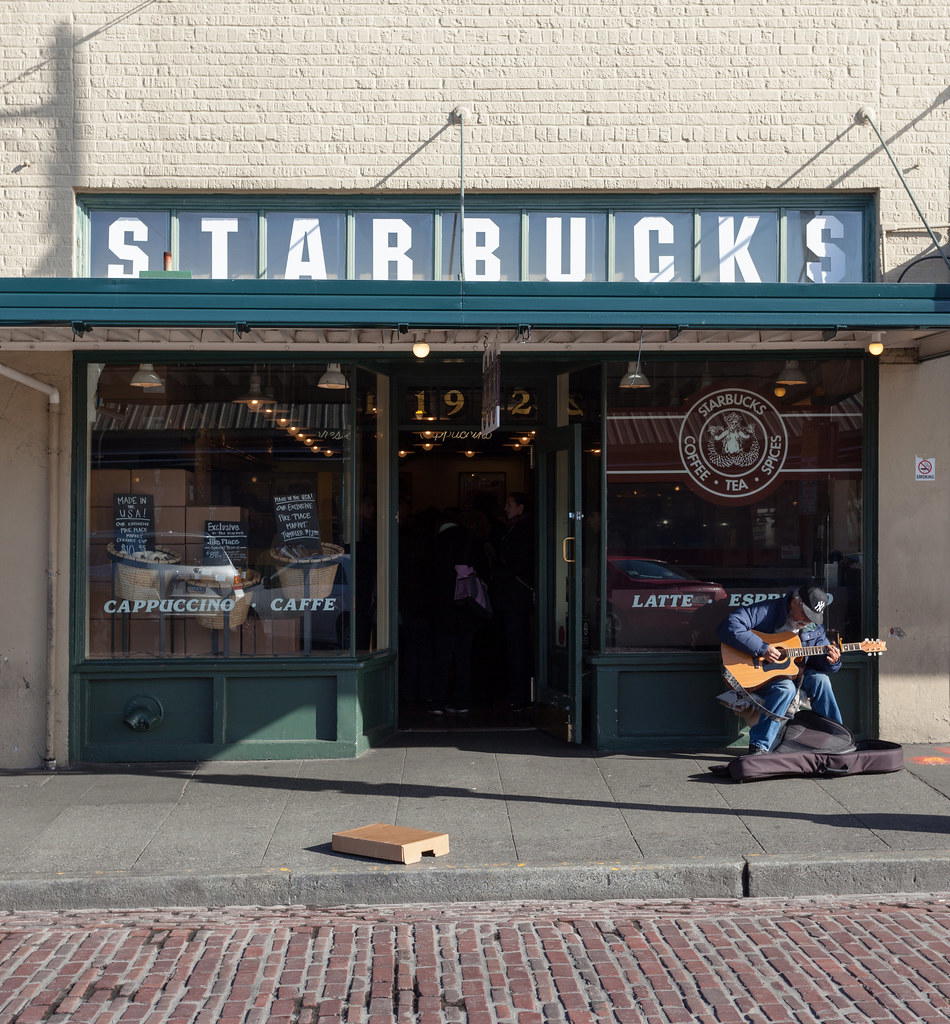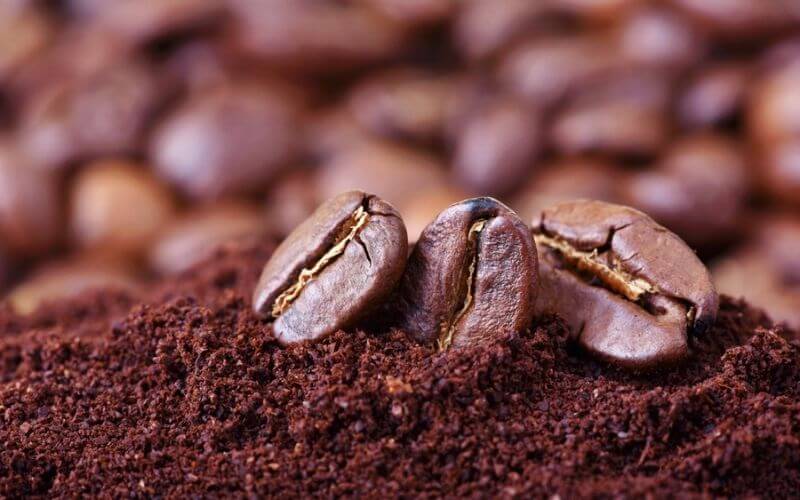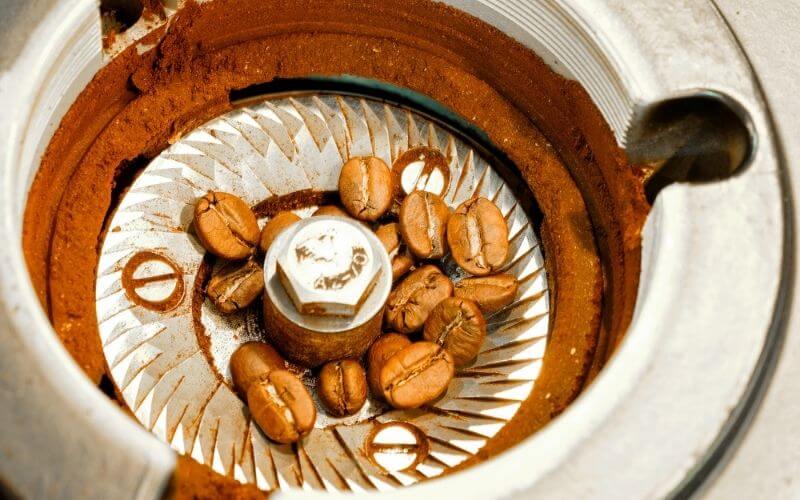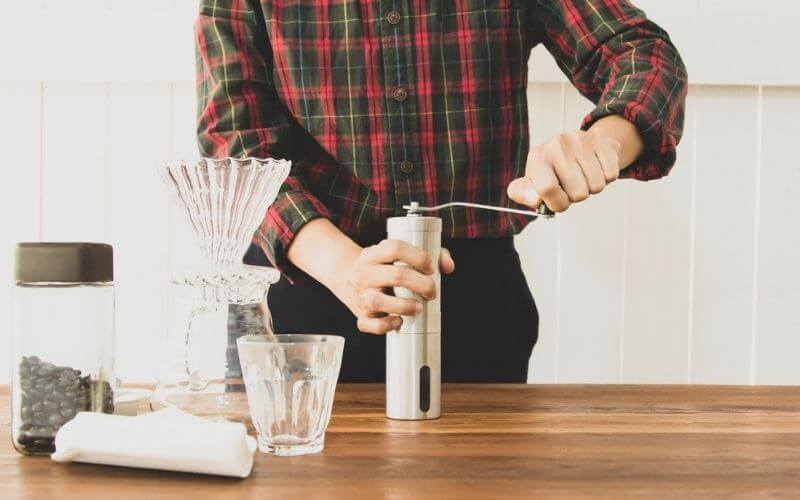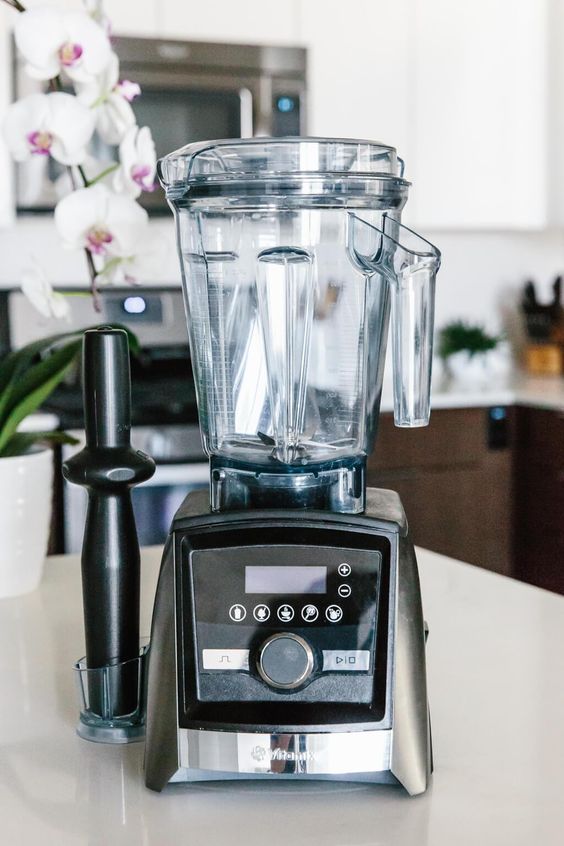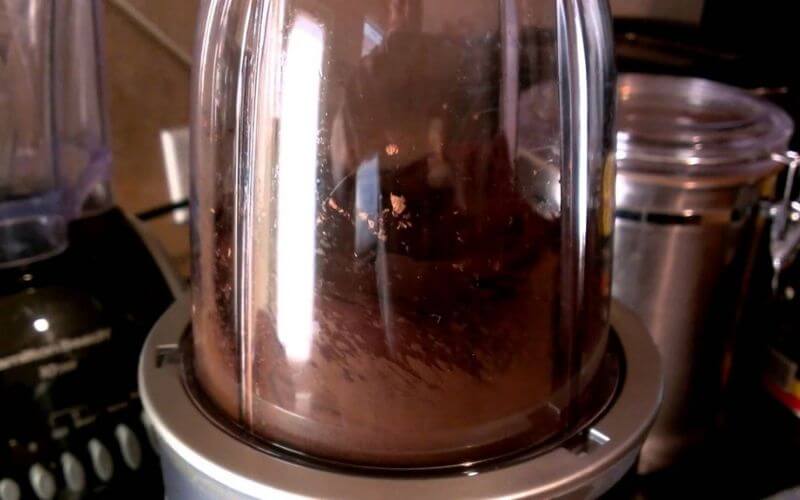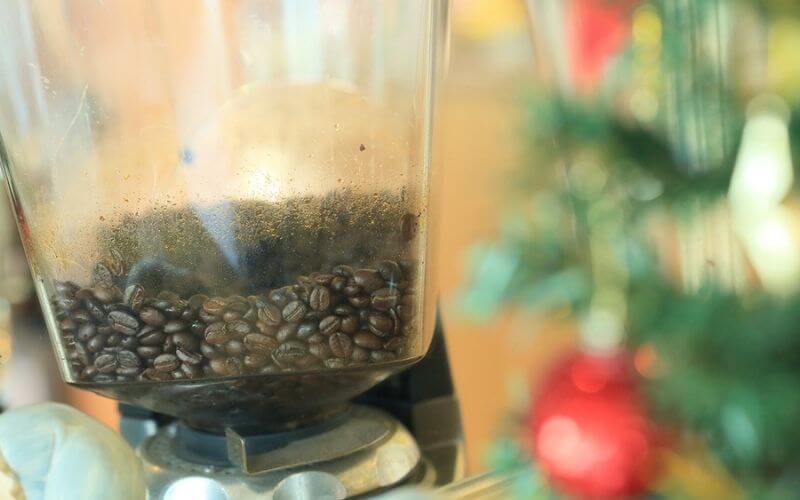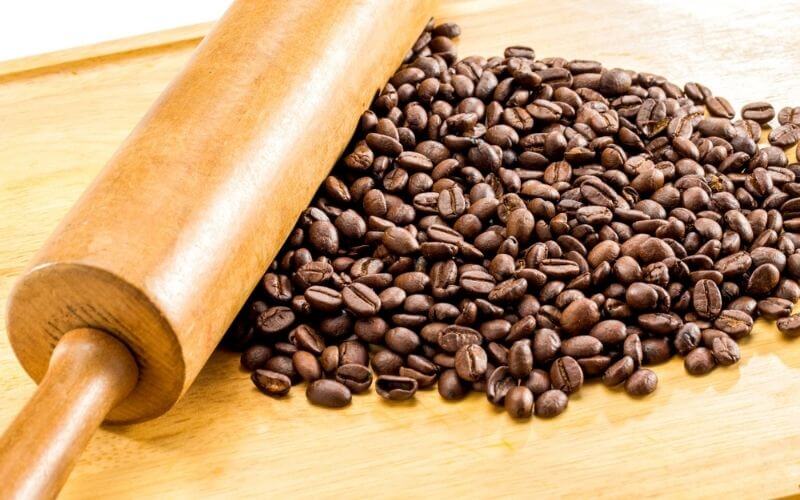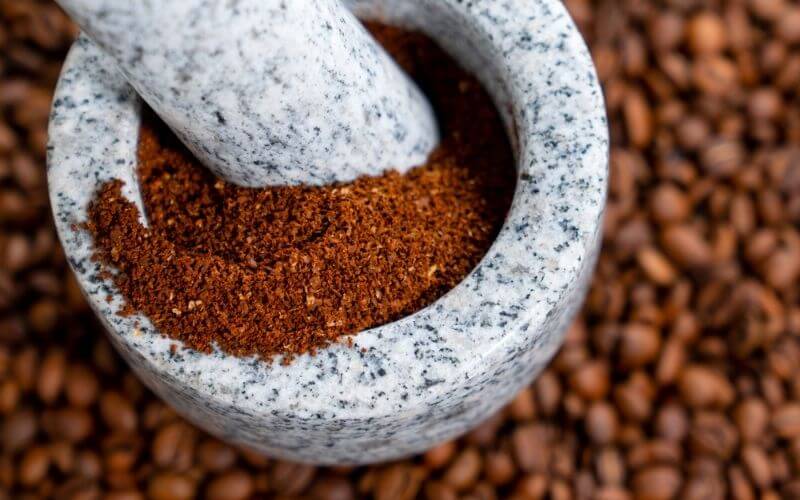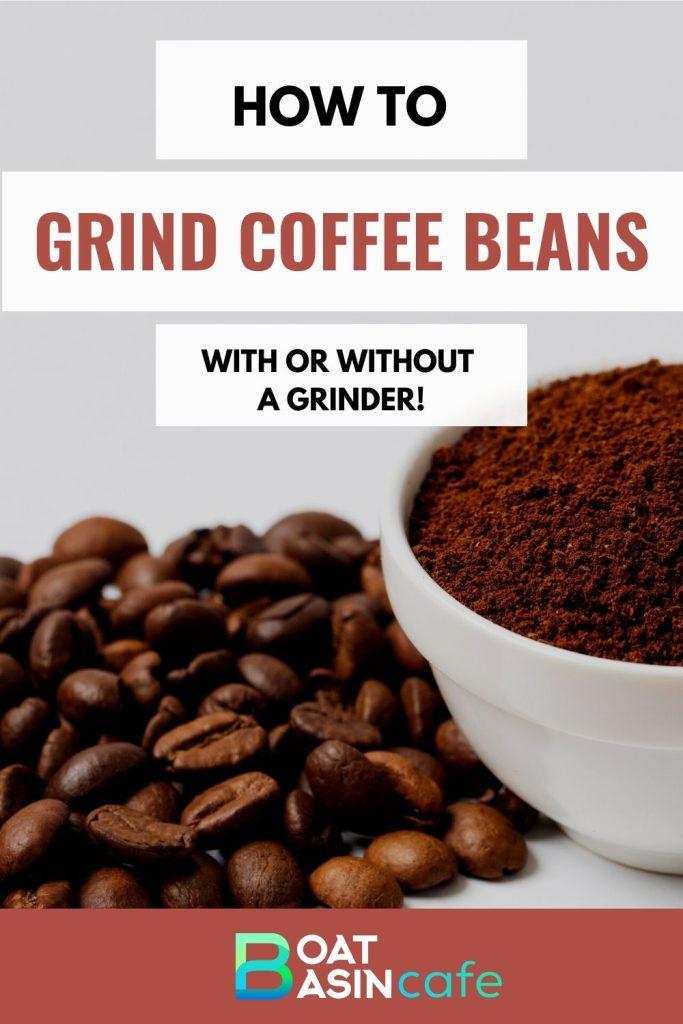We all need some ice with a splash of milk and some rich, smooth espresso all combined. Where do we go when we crave it? To Starbucks!
As much as we love our iced coffee, we have always wondered exactly how much caffeine is in these sugary drinks. Some people choose a Venti Latte over espresso because they think it’s not as caffeinated. But is it the case in reality?
In this article, we explore everything there is to know about Starbucks classic Venti Latte. Let’s find out how many shots of espresso in a venti after all!
What is a Venti

Oh the endless confusion with Starbucks coffee sizes. What’s a Venti, a Grande, or Trenta? For now let’s talk about the most popular option on Starbucks, the Venti latte.
Venti is Italian for “twenty” which was first named in 1986. The founder Howard Schultz visited Italy and enjoyed the coffeehouse tradition there.
He wanted to bring back a part of Italy’s classic coffee culture to America. So when he got back, he changed the menu and added Italian terminologies to them. That’s when Venti was added. You might be wondering how big a venti is?
So the venti Starbucks size is 20oz or 591 ml warm. But how many ounces in a venti iced coffee? Well a Starbucks iced venti has 24o and 709 ml.
How Many Shots of Espresso are in a Venti?
Venti latte is made using two Starbucks espresso shots. This is a lot if you count all the sugar and fat in each Venti.
Two Starbucks espresso shots can really mess up your system if you are not used to eating. Venti usually contains a lot of caffeine so you might get a glucose spike after drinking it. So
Both Venti and Grande have the same amount of espresso. The main difference is, one has a higher milk level than the other. So it’s better to not spend the extra money!
How Much Caffeine is in a Venti?
So how much caffeine in a shot of espresso? A single Starbucks espresso shot contains around 75 mg of caffeine. So two shots of espresso would mean around 150 mg of caffeine in each Venti latte.
If you order their Venti Blonde roast coffee, it even has higher caffeine than a double espresso. Caffeine in venti iced coffee can be much higher than you’ve imagined.
Blonde roast is a lightly roasted coffee bean that contains a much higher caffeine level than espresso beans. So a double shot of blonde roast would give you around 475 mg of caffeine! Caffeine in venti iced coffee is quiet on the same level. Our advice: don’t do it!
How Much Caffeine in Espresso Shot
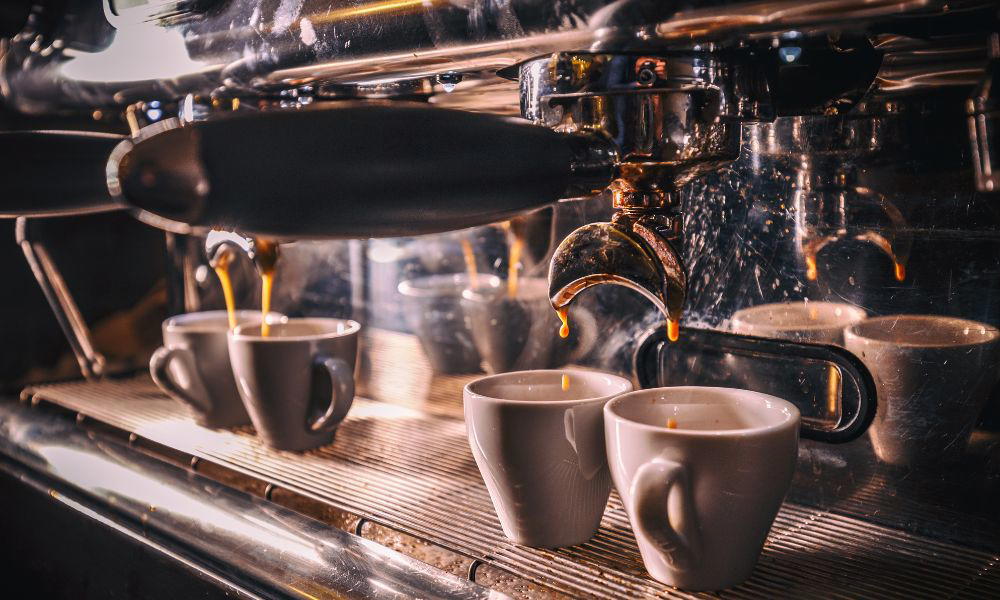
Espresso is generally thicker and more concentrated than other types of coffee and has higher caffeine content.
An espresso shot typically contains 64mg of caffeine, according to the US Department of Agriculture (USDA) data, while a regular cup (8 liquid ounces) of coffee has around 95mg.
However, this can vary depending on the amount of coffee used, the type of coffee, the amount of pressure, and the brewing method.
For example, a double shot of espresso may have twice the amount of caffeine as a single shot. Espresso made with a higher pressure has more caffeine than espresso made with a lower pressure. And a shot of espresso made with a larger amount of coffee will have more caffeine than a shot made with a smaller amount of coffee.
So, in general, the caffeine content of an espresso shot can range from 30 mg to 120 mg.
However, one question that may be lingering on your mind is, “why does it feel like a one-ounce espresso shot has more caffeine (gives you more kick) than an eight-ounce cup of coffee?”
Simple: You’re probably consuming the espresso much more quickly. Espresso is often sipped more slowly in Europe by coffee drinkers. In the USA? Not really. We typically savor our coffee while downing an espresso shot quickly.
In fact, espresso might be a great choice while trying to reduce your caffeine consumption (if you stick to one shot daily).
How Much Caffeine Is 4 Shots of Espresso
A typical double espresso shot has about 120mg of caffeine, so four shots of espresso would have about 480mg of caffeine, which is way above the FDA-recommended 400mg a day.
However, the actual amount of caffeine in four shots of espresso can vary greatly depending on the type of coffee beans used, the brewing method, the brewing time, and the quantity per serving. Also, every coffee shop and barista has its own equipment and filter basket sizes.
For example, four espresso shots from Starbucks “quad” (often known as two double shots) would have 300mg of caffeine, while four espresso shots from Dunkin’ Donuts would have 472mg of caffeine.
Starbucks Shot of Espresso Caffeine
A lot of people are curious about the caffeine content in Starbucks shots of espresso.
Want a simple way to figure out how much caffeine is in your favorite Starbucks coffee? Each espresso shot contains 75 mg of caffeine. For 150 mg, order a latte with two shots!
Here is a breakdown of the caffeine contents in Expresso shots at Starbucks:
| Amount | Weight | Caffeine | Term |
| 1 Shot | 1 fluid oz | 75 mg | Single |
| 1 Shot (Decaf) | 1 fluid oz | 3 mg | Solo Decaf |
| 1 Shot (Half-caf) | 1 fluid oz | 40 mg | Solo Half-caf |
| 2 Shots | 2 fluid oz | 150 mg | Doppio/Double |
| 3 Shots | 3 fluid oz | 225 mg | Triple |
| 4 Shots | 4 fluid oz | 300 mg | Quad |
Cup size is also important when it comes to the caffeine content of Starbucks. As you may know, Starbucks offers four standard cup sizes: Short, Tall, Grande, and Venti. There is also a kid-size cup and an extra-large Trenta available.
However, contrary to popular belief, you won’t get an additional shot every time you increase the size of the cup.
The caffeine content of Starbucks’ espresso-based beverages often goes like this: Grande and Venti’s sizes contain 150 mg (double); Short and Tall sizes have 75 mg (solo/single).
Espresso has 75 mg of caffeine per shot if you order it straight. In other words, Solo (75), Doppio (150), Triple (225), and Quad (300). Therefore, a Triple latte has 225 mg of caffeine, which is more than a Venti latte does.
Comparing these numbers to a cup of coffee, which has about 95mg of caffeine, you can see that Starbucks shots pack quite a punch!
If you’re someone who is sensitive to caffeine, you might want to steer clear of Starbucks shots. But if you can handle your caffeine, then go ahead and enjoy a delicious Starbucks espresso!
Tips for Making Healthier Beverage Choices at Coffee Shops

Coffee shops are a popular destination for many people, whether it’s for a morning pick-me-up or a mid-day break. However, many of the beverages offered at coffee shops can be high in calories, sugar, and unhealthy fats. If you’re trying to make healthier choices when visiting coffee shops, here are some tips to consider.
Choose Drinks with Less Sugar
Many coffee drinks are loaded with sugar, which can add up quickly and contribute to weight gain and other health issues. To reduce your sugar intake, opt for drinks that are naturally low in sugar, such as black coffee or unsweetened tea. If you prefer sweetened drinks, ask for less sugar or choose natural sweeteners like honey or stevia.
Consider Milk Alternatives
Many coffee drinks are made with whole milk, which can be high in saturated fat and calories. To make healthier choices, consider milk alternatives like almond milk, soy milk, or oat milk, which are lower in calories and saturated fat.
Watch the Syrups and Flavors
Syrups and flavorings can add a lot of calories and sugar to coffee drinks. To make healthier choices, opt for drinks that use natural flavors like cinnamon or vanilla extract, or ask for less syrup or flavoring in your drink.
Be Mindful of Portion Sizes
Coffee drinks can be high in calories and sugar, even in small sizes. To make healthier choices, consider downsizing your drink or sharing it with a friend.
Choose Drinks with Health Benefits
Some coffee drinks can provide health benefits when consumed in moderation. For instance, green tea or matcha lattes are high in antioxidants and can provide a boost of energy without the sugar and calories of many coffee drinks.
Make Your Own Drinks at Home
One of the best ways to make healthier choices when it comes to coffee drinks is to make your own drinks at home. This way, you can control the ingredients and choose healthier options like unsweetened almond milk and natural sweeteners like honey.
Recommended Daily Intake of Caffeine

The recommended daily intake of caffeine varies depending on age, sex, weight, and other factors. According to the U.S. Food and Drug Administration (FDA), up to 400 milligrams of caffeine per day is generally considered safe for most healthy adults [1]. This equates to about four 8-ounce cups of coffee or 10 cans of soda.
However, pregnant women, individuals with certain medical conditions, and those who are sensitive to caffeine may need to consume less or avoid caffeine altogether. It’s important to consult with a healthcare professional to determine what amount of caffeine is safe for you to consume.
Potential Health Effects of Caffeine
Caffeine can have both positive and negative effects on health, depending on the amount consumed and the individual’s sensitivity to caffeine. Here are some potential health effects of caffeine:
Positive Effects
- Improved Cognitive Function: Caffeine can enhance cognitive function, including memory, attention, and reaction time [2].
- Increased Metabolic Rate: Caffeine can increase metabolic rate, which may aid in weight loss and weight management [3].
- Reduced Risk of Certain Diseases: Regular coffee consumption, which contains caffeine, has been associated with a lower risk of certain diseases, including type 2 diabetes, liver disease, and some types of cancer [4].
Negative Effects
- Anxiety and Nervousness: Excessive caffeine intake can cause feelings of anxiety, nervousness, and restlessness in some people [5].
- Sleep Disturbances: Caffeine can disrupt sleep patterns, leading to insomnia and other sleep disturbances [6].
- Dehydration: Caffeine is a diuretic, meaning it can increase urine production and lead to dehydration if consumed in excess [7].
- Digestive Issues: Excessive caffeine intake can also lead to digestive issues like acid reflux, stomach irritation, and diarrhea in some people [8].
The Science Behind Espresso
Espresso is made by extracting the flavor and caffeine from coffee beans through a process called “percolation.” This process involves forcing hot water through the coffee grounds using high pressure, which extracts the soluble compounds in the coffee beans, including caffeine, oils, and flavors.
The resulting liquid, known as espresso, has a higher concentration of caffeine compared to regular brewed coffee due to the higher coffee-to-water ratio and the shorter brewing time. One shot of espresso typically contains around 75 milligrams of caffeine, while an 8-ounce cup of regular coffee contains around 95 milligrams of caffeine.
Health Benefits of Espresso
When consumed in moderation, espresso can have several health benefits. Here are some of the potential health benefits of espresso:
Improved Cognitive Function
Caffeine, the primary active ingredient in espresso, is a central nervous system stimulant that can improve cognitive function, including memory, attention, and reaction time [1].
Increased Metabolic Rate
Caffeine has also been shown to increase metabolic rate, which can aid in weight loss and weight management [2].
Antioxidant Properties
Espresso contains antioxidants that can help protect the body against oxidative stress and damage from free radicals [3].
Lower Risk of Certain Diseases
Several studies have linked regular coffee consumption, including espresso, to a lower risk of certain diseases, including type 2 diabetes, liver disease, and some types of cancer [4].
Potential Risks of Espresso
While moderate espresso consumption is generally considered safe for most people, excessive caffeine intake can cause adverse effects, including:
Anxiety and Nervousness
Excessive caffeine intake can cause feelings of anxiety, nervousness, and restlessness in some people [5].
Sleep Disturbances
Caffeine can also disrupt sleep patterns, leading to insomnia and other sleep disturbances [6].
Dehydration
Caffeine is a diuretic, meaning it can increase urine production and lead to dehydration if consumed in excess [7].
Digestive Issues
Excessive caffeine intake can also lead to digestive issues like acid reflux, stomach irritation, and diarrhea in some people [8].
How to Make Venti Latte at Home
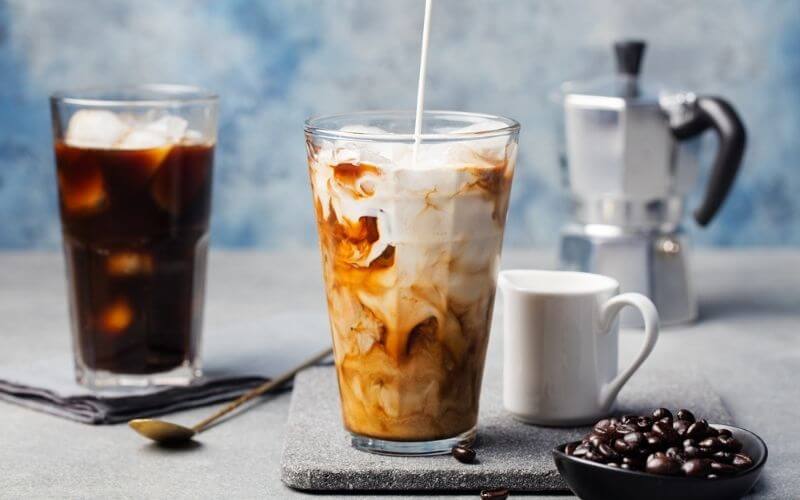
As much as we love the taste of a Starbucks Venti in the morning, it can get quite expensive if you plan to drink them every day. Why bother when you can make delicious iced coffee at home!
Here’s how you make Starbucks iced latte at home:
Things You’ll Need:
- 1 cup ice
- 4 shots of espresso
- ¾ cup whole milk
- Vanilla or classic syrup
Instructions:
- Fill your preferred Venti-sized glass with ice and pour your 4 shots of freshly brewed espresso in it.
- Pour the milk and syrup into a mason jar.
- Shake the milk until it starts to froth up.
- Gently pour the milk and foam into the ice-espresso glass.
- Pick your favorite glass straw and enjoy your homemade Starbucks tall venti grande!
Frequently Asked Questions
Is 4 Shots of Espresso a Lot?
If you drink four shots of espresso throughout the day, then it’s not a lot. But if you consume them all in one drink or within a short period of time, it’s not good for your health.
Overconsumption of caffeine at once can cause rapid heartbeat and unsteadiness which is actually the opposite of what you want from your coffee. Instead of giving an energy boost, it can cause you to crash.
How Much Caffeine is in Starbucks 4 Shot Espresso?
t depends on what type of coffee beans and roasting level you are choosing. But in general, a single shot of espresso at Starbucks has around 75mg of caffeine in it.
So four shots would mean 300 mg of caffeine. A Starbucks Caffe Americano can have one to four shots depending on your preference.
Can 6 Shots of Espresso Kill You?
Six shots of espresso might not kill you instantly but it will have a serious impact on your health in the long run. If you happen to consume 6-7 shots of espresso each day, it can lead to heart problems, panic attacks, and insomnia.
Drinking too much caffeine can cause muscle tremors and restlessness, something totally the opposite of what we want from coffee. Anything in moderation is good.
Coffee is no exception to that rule. Six shots of espresso become too much and can lead to early cases of heart disease and even heart attacks.
Is Venti Bigger than Grande?
If you are confused with the Starbucks sizes then join the club. Starbucks has a very peculiar system of sizing their drinks.
Venti is actually bigger than a grande. A grande consists of 16 ounces of coffee whereas a Venti has 20 ounces of coffee.
Both Grande and Venti use two shots of espresso so there is no point in buying a venti unless you want some extra milk to dilute your coffee. A Grande is also more economical and good value for money.
How Do You Flush Caffeine Out of Your System?
If you consume too much coffee, you might notice muscle tremors and restlessness. Lack of sleep is another big issue with consuming too much caffeine.
To flush the caffeine out of your system, the best thing to do is drink a lot of water. Water helps to remove the excess caffeine from your body. Caffeine can cause dehydration so staying hydrated is a priority.
Another thing you can do is practice deep breathing. You might be noticing eye twitching and shaky hands. Close your eyes and take long and deep breaths until things start to feel better.
Why Do I Feel Shaky after Drinking Coffee?
You might feel shaky after drinking coffee if you had an empty stomach prior to that. Coffee is a natural stimulant.
But in order to stimulate your body, it requires energy. If you are not eating properly, your body is not getting enough energy to use the caffeine boost.
This results in feeling shaky and dizzy. The best way to handle it is by sitting down somewhere and eating carbs. Now you see why they sell bagels right beside coffee carts?
Can You Sleep with Caffeine in Your System?
You can sleep with caffeine but it won’t have a normal sleep routine. Caffeine causes disruption in your sleep so you might end up waking several times in the middle of the night. When you finally wake up in the morning, you might find yourself more tired than you were last night.
Caffeine can interfere with your body clock so you might find it hard to fall asleep in the first place. Many people tend to stay awake the whole night if they drink coffee in the afternoon or evening.
How much caffeine is in a shot of espresso?
A shot of espresso typically contains around 75 milligrams of caffeine.
Can espresso help with weight loss?
Caffeine, the primary active ingredient in espresso, has been shown to increase metabolic rate, which may aid in weight loss and weight management.
How much caffeine is safe to consume daily?
Up to 400 milligrams of caffeine per day is generally considered safe for most healthy adults.
What are some low-sugar coffee drink options?
Some low-sugar coffee drink options include black coffee, unsweetened tea, and drinks sweetened with natural sweeteners like honey or stevia.
Are all coffee drinks high in calories and sugar?
Not all coffee drinks are high in calories and sugar, but many popular options like flavored lattes and frappuccinos can be high in calories, sugar, and unhealthy fats.
To Finish Off
Starbucks coffee is truly a part of our lifestyle at this point. It’s still a thing to wonder how good these highly caffeinated drinks are for our bodies. And let’s not forget the amount of sugar and calories you get from just one drink.
Now that you know how many shots of espresso in a venti, do you think it’s worth it? Or should we shift to making our own coffee at home? Comment below to let us know!
